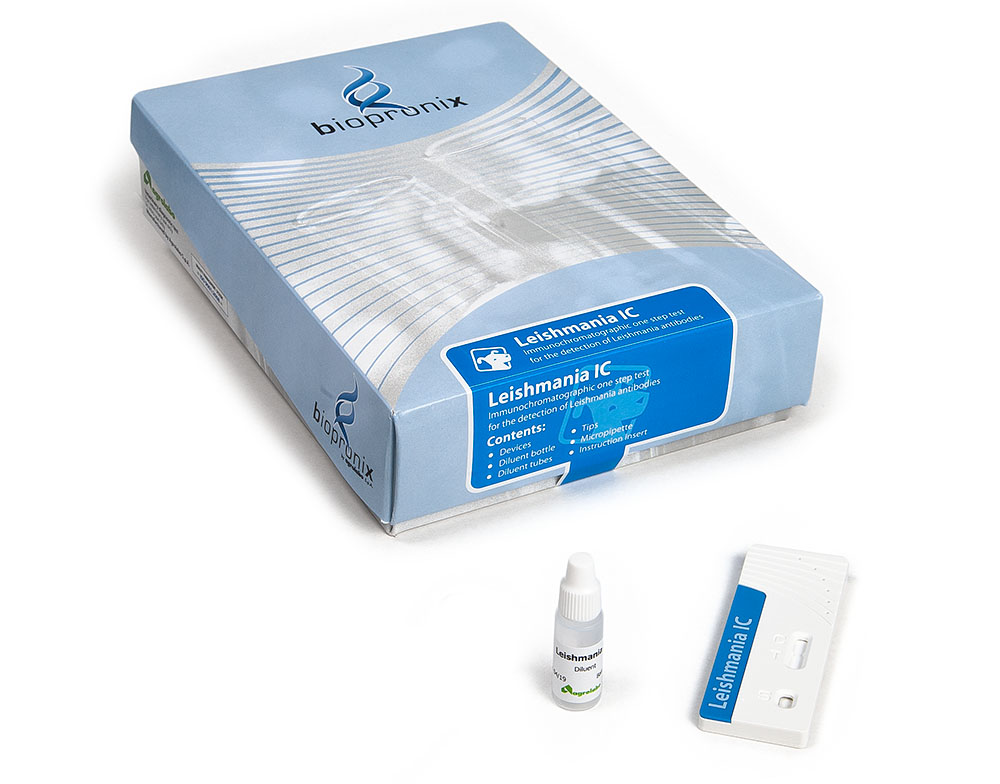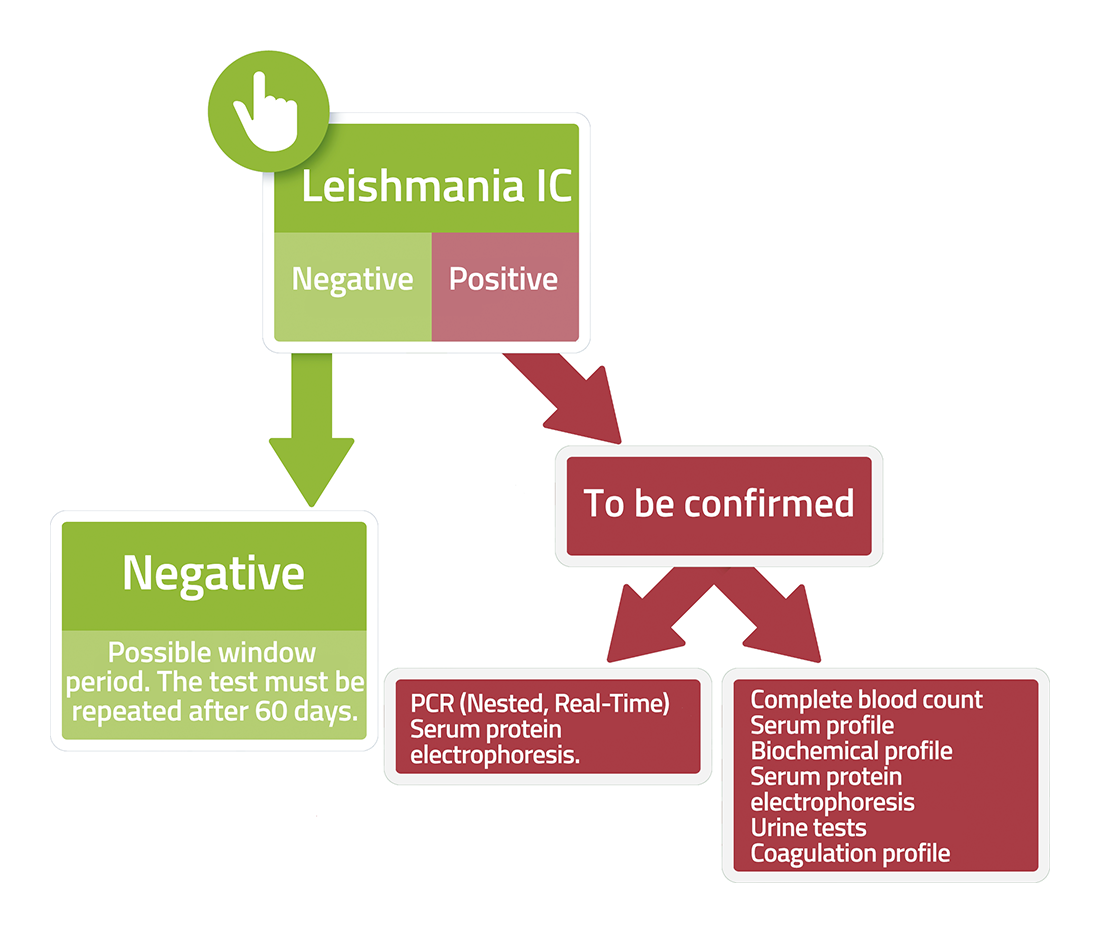Leishmania IC
Rapid test for the detection of anti-Leishmania infantum antibodies
Leishmania IC is an immunochromatographic test for the detection of antibodies to Leishmania infantum in canine whole blood, serum or plasma.
Leishmaniasis in dogs is not easy to diagnose and treat. It is a parasitic pathology, caused by the protozoan Leishmania infantum, which is transmitted to the dog through the bite of an insect, the phlebotomist or sandfly. It looks like a small mosquito, both for its tapered appearance and for the fact that it is a blood-sucking fly.
Leishmania parasitea are rather particular because they need both the body of a phlebotomist and that of a mammal, such as the dog, to develop and multiply: the female of the phlebotomist has to bite the dog and suck the blood in order to lay the eggs. If the dog is infected, the Leishmanias move into the insect's stomach where they develop and multiply, becoming infectious. Thus, when the sand flies bite a healthy dog, it will be able to transmit the parasite through the bite.
The sand flies strike especially in the warm season, from May to October just like mosquitoes, they appear mainly at sunset and are widespread in tropical and sub-tropical areas and throughout the Mediterranean basin, including islands. With the gradual but inexorable increase in the earth's temperature, sand flies are slowly spreading even in areas with a more temperate climate, such as Northern Italy where there were no outbreaks until a few years ago.
In the dog there is substantially a generalized disease also called viscero-cutaneous form. Infection does not always lead to disease, in fact many infected dogs remain asymptomatic throughout their life, without developing clinical manifestations. The clinical status of Leishmaniasis in dogs shows a great variability of symptoms and lesions depending on the level of infestation, the immune status of the host and the stage of disease development and infected organs.
When the disease develops, the symptoms are not immediate: they may appear after a few weeks or even a few months after the bite of sandfly, and these may occur individually or all together, at the same time.
Symptoms of cutaneous leishmaniasis:
- Dry exfoliative dermatitis and progressive alopecia around the eyes, on the legs and on the back. Dermatitis can degenerate and cause lesions and ulcers even without itching – usually affecting the eyes, ears, nose and mucous membranes; in severe cases, blood may also leak from these.
- Ulcers can cause swelling of the lymph nodes (in 90% of cases)
Accelerated growth and abnormal thickening of the nails (onychogryphosis) (in 20% of cases),
Joint pain and lameness including back pain: the dog often stands motionless, holding his head down to seek relief (in 37.5% of cases),
.
Symptoms of visceral leishmaniasis:
- renal failure, polydipsia, polyuria (in 40% of cases)
- vomiting and diarrhoea, which result in loss of appetite and rapid and evident weight loss (in 64% of cases)
- neurological damage or even uremic coma.
- nosebleed (epistaxis) due to ulcers in the oral mucosa, in which parasites are present (in 15% of cases).
- ocular lesions, due to a uveitis and iridocyclitis and conjunctivitis (respectively in 1.3% and 32.5% of cases).

